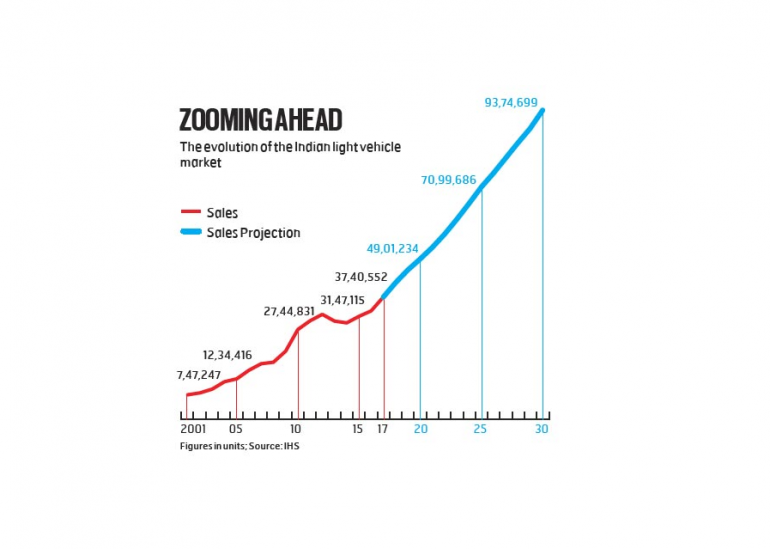An Overview of the Indian Automotive Industry :
India is the fifth largest market in the world when it comes to automotive sales. In 2019 alone, over 26 million units were produced and sold in the Indian market. India is also among the top ten nations when it comes to commercial vehicles. Two wheelers dominate the Indian market and have a market share of 80.8% owing to the young population in India. The rural market is also expanding as towns and villages have better access than before. The annual growth rate of the Indian Automotive market is over 2.3%, indicating a positive trend in the right direction.
Contribution of the Auto Sector to India’s GDP :
The Automotive sector in India is valued at $93 billion currently and is growing at a steady pace. The automotive industry contributes a whopping 49% of India’s manufacturing GDP. In 2018, the Automotive Sector contributed to 7.5% of India’s total Gross Domestic Product (GDP). While this percentage dropped to 7% in the current year, owing to COVID-19, new emission norms and the economic downturn, experts believe that it may show an increase towards the end of this year. From March 2020 to April 2020, all automotive manufacturers and dealers were shut down for a period of 40 days, further contributing to the decline in GDP.
As a result, the GDP, which saw an increasing trend began to feel the pinch of an unexpected and unforeseeable downfall.
How is India’s Automotive Landscape Changing ?
India is expected to emerge as the world’s third-largest passenger vehicle market by 2021.The government and the automotive sector, want to increase the contribution of the automotive sector to approximately 12%, a 5% increase from what it is today.
It took India around seven years to increase annual production to four million vehicles from three million. However, with the advances in industrialization, it is expected that India can ramp up vehicle production to five million units a year, within the next three to five years. India’s rural and urban landscapes are changing, and this in turn can prove to be a boost to the automotive sector.
Rapid urbanization in India is driving people towards the cities. Smaller towns are also becoming hubs of economic activity. This means that India will have over 500 million people living in the cities by 2030. Rising incomes and opportunities will result in over 60 million households entering the consuming class (upper middle class and upper class). A vast majority of these households will purchase a two wheeler or a car, and this trend will play a key role in helping the automotive sector grow.

Giving the Automotive Industry a Thrust to facilitate an increased Share of GDP
The automotive industry will not grow, unless am impetus for growth is provided. These factors that facilitate the growth of the automotive industry may be either internal or external. Here are some factors that can influence the growth of the automotive industry in India.
- India as a Manufacturing hub : India imports several automotive components from nations such as Germany, South Korea and United Kingdom among others. This can be avoided if India is transformed to be a manufacturing hub. This is result in decreased imports and will help the growth of the automotive industry in India.
- Electric Vehicles : Electric Vehicles are steadily penetrating the Indian market and are becoming common in the urban areas of India. Facilitating the manufacturing and assembly f electric vehicles an give a boost to the automotive industry.
- Research and Development : Indian academic institutions are conducting inadequate amounts of research on development and innovation in the automotive industry. As a result, billions of dollars is spent on royalties. Focusing on innovation, can make the Indian Automotive industry command a higher share of the GDP pie.

The Bottom Line
The pandemic is beginning to abate, and it is only a matter of time before the economy starts to recover. While the emission norms seem to be giving the automotive industry a hard time, they are absolutely essential, as unchecked emissions in combination with a surge in the number of automobiles will make India unliveable.
Over 32 million Indians are either directly or indirectly employed by the automotive industry. While the industry is facing setbacks, the economic climate will surely begin to exhibit a better climate, which in turn will facilitate the growth of the Indian automotive Industry.
4




